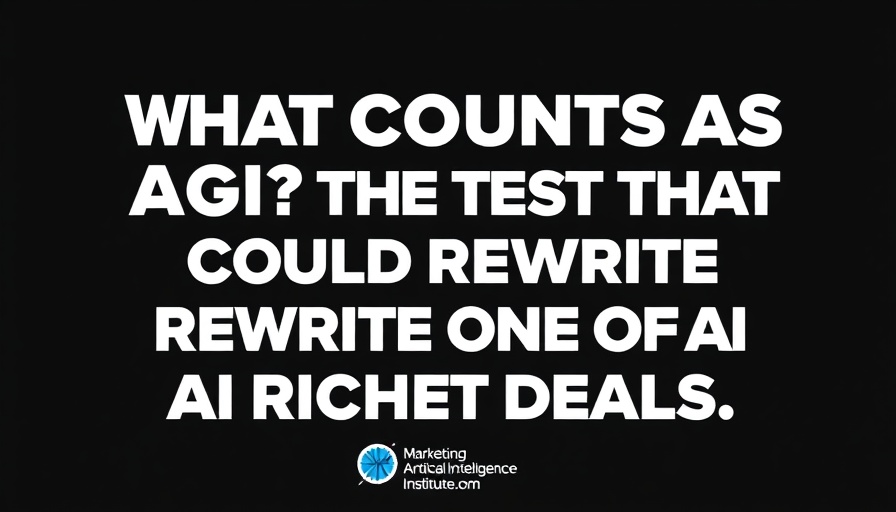
Revolutionizing AI Training: The Need for Better Data
The journey towards highly efficient artificial intelligence (AI) systems is paved with the need for quality data. In today’s digital landscape, companies face the challenge of training models capable of performing complex tasks like identifying misleading advertisements, a feat that requires deep contextual understanding. Traditional machine learning approaches often fall short, leading to significant investments in time and resources for data curation.
New Methods: Active Learning for Enhanced Efficiency
A groundbreaking approach by Google researchers seeks to change this dynamic by utilizing an active learning method to drastically lower the volume of training data needed for fine-tuning large language models (LLMs). This innovative strategy can cut down training data from a staggering 100,000 examples to under 500 while enhancing the model's accuracy by up to 65% in aligning with human expert judgments. Such drastic reductions empower businesses to achieve better results with fewer resources.
A Deeper Understanding of the Process
The innovative curation process begins with a zero- or few-shot model that generates an initial dataset from ads labeled as either clickbait or benign. Considering that less than 1% of ads are typically clickbait, the labeled data often presents an imbalance that can lead to confusion in categorization. The novelty of this approach lies in its ability to cluster examples, allowing for an insightful identification of which ads require human inspection — effectively targeting the most confusing cases.
Benefits to Businesses and AI Professionals
For businesses aiming to stay competitive, leveraging high-quality, less voluminous training data streamlines the operational overhead associated with AI training. It allows for timely adaptations to policy changes and emerging ad formats, ensuring companies can respond to consumer behavior dynamically. Likewise, for professionals eager to learn about AI and apply it effectively within their organizations, understanding these developments in data efficiency is crucial. It paves the way for more innovative use cases and direct applications of AI tools, fostering career development in this expanding field.
Future Implications: What's Next?
As organizations increasingly adopt these methodologies, the implications for AI integration across various sectors are profound. Streamlined data curation methods not only mitigate costs but also catalyze the development of smarter AI applications that enhance user experiences. For entrepreneurs and AI engineers alike, staying updated on such innovations is vital, as they dictate the future of work within AI environments. The rise of AI-specific networking opportunities highlights a growing community focused on shared learning and collaboration around these advancements.
The Community for AI Innovation
As AI continues to redefine business landscapes, the importance of community cannot be overstated. Collaborating within the AI community through networking events and online platforms allows professionals to share insights, tools, and resources that further drive innovation. Those intent on championing AI advancements within their fields can benefit immensely from participating in discussions and forums dedicated to the future of artificial intelligence.
Conclusion: The Path Forward
Understanding the methodologies behind efficient AI data training is not just an academic exercise; it's a vital skill for current and aspiring professionals in the tech landscape. As AI education expands, knowing how to reduce training data needs while enhancing model performance will be critical to fostering successful AI deployments. Embrace these changes, engage with your AI community, and leverage these insights to enhance your career in the future of work.
 Add Row
Add Row  Add
Add 





Write A Comment